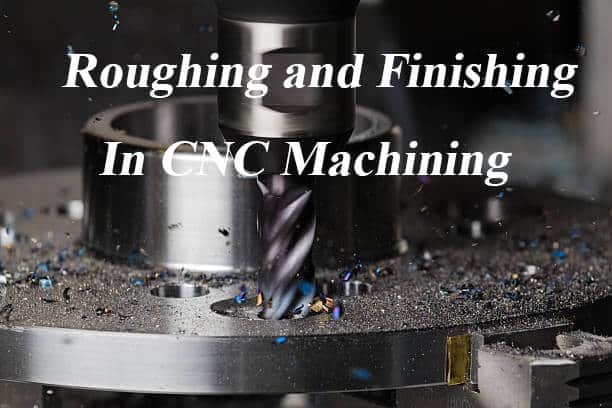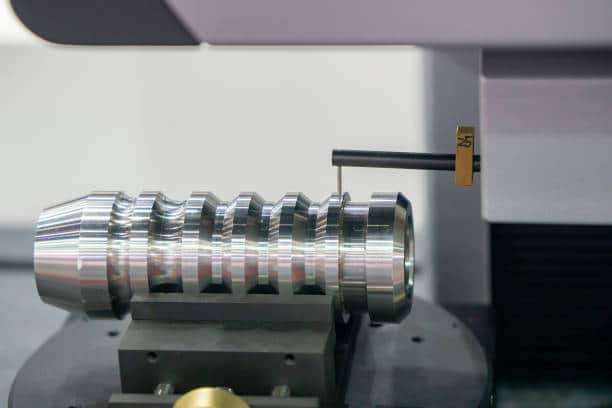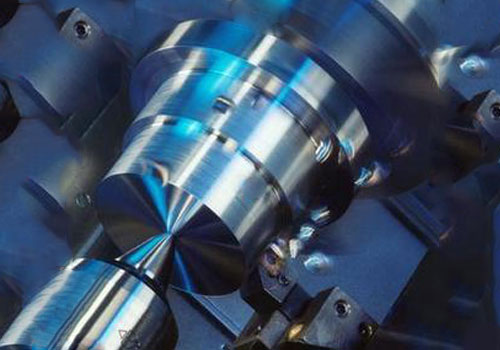CNC machining is a process of manufacturing by subtraction. It involves the gradual removal of material from a solid workpiece to create a desired three-dimensional outcome. The subtractive procedures used in CNC machining include milling, turning, boring, grooving, and drilling. These operations are useful for high stock removal rates and can also attain relatively good surface quality.
However, accomplishing both outcomes in a single pass is not feasible. As a result, machining usually occurs in two phases with different process parameters, roughing and finishing. Here, we’ll focus on these two processes in terms of their functions, key differences, and factors that should be taken into account in the manufacturing process.
Why Use Roughing in Machining?
Roughing in machining is the process of removing large amounts of material from a workpiece in preparation for semi-finishing and finishing operations. It involves using large feed rate and cutting depth to remove the excess material as quickly and efficiently as possible, often leaving a somewhat rough surface finish.
The purpose of roughing is to remove as much material as necessary to get the workpiece close to its final shape, while also minimizing the amount of time and energy required to do so. It’s usually the first stage in the CNC machining process and allows for more precise and efficient finishing operations later in the machining process.
Benefits of Roughing
Roughing in machining reduces production time and costs, extends tool life, and easily detects defects of blanks, making it an essential part of the manufacturing process.
- Time-saving: Roughing is a rapid removal of large amounts of material, which reduces the time needed for machining. This means that the machining process can be completed more quickly and the parts can be produced at a faster rate.
- Cost-saving: It can help to save money by completing the roughing process in a single setup, which eliminates the need for additional setups on the finishing machine.
- Saving materials: Rough machining decreases the volume of material required to be extracted in the finishing level by up to 50%. This is an impressive amount of material that is saved, lowering the total cost and shipping weight.
- Extended tool life: By removing a lot of material in the roughing stage, the wear and tear on the cutting tool are minimized. This leads to less frequent tool changes and fewer tool-related expenses.
- Identifying Blank Defects Easily: If a machine operator sends a workpiece that has been rough machined to the finishing process, any defects like air holes or sand holes present in the product will be quickly visible and recognisable to operators. Defects or cracks are more evident once material has been removed from a particular portion of the component.
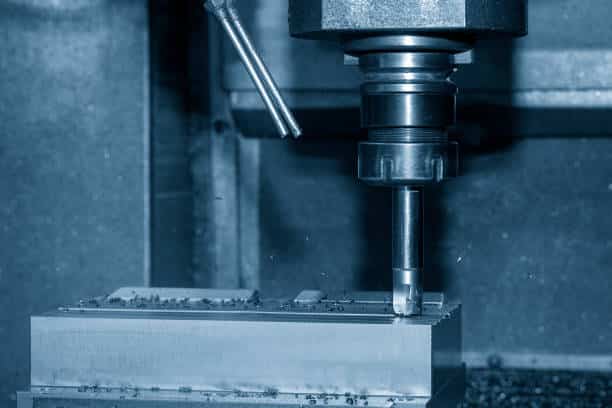
Why Use Finishing in Machining?
Finishing in machining refers to the process of giving the final surface finish and dimensional accuracy to a machined part or component. It’s a crucial method to improve the mechanical properties of the final product, such as performance, function, durability, electrical conductivity, smoothness, corrosion and wear resistance, and appearance.
Finishing involves using various tools and multiple techniques to remove any remaining material and improve the surface finish of the part. Based on the desired features of the already fabricated parts, a specific or a combination of the finishing processes is employed to enhance or add their properties, including powder coating, sandblasting, painting, polishing, grinding, electroplating, bead blasting, anodizing, etc.
Finishing usually takes place after roughing operations on workpieces in CNC manufacturing projects and is used to achieve final dimensions in terms of flatness, thickness, roughness, tolerances, and surface finish by removing any necessary excess material and completing the manufactured component.
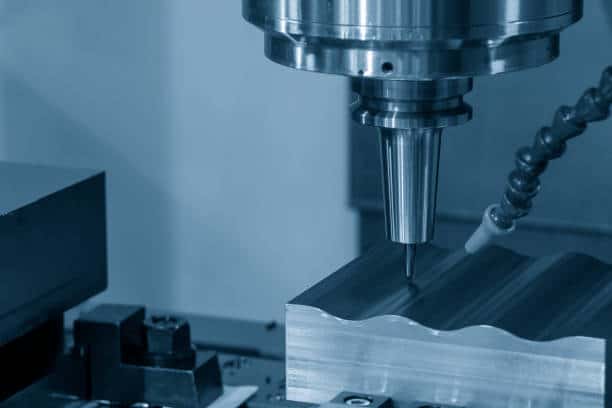
Benefits of Finishing
The finish of a machined part or component is important for several reasons, including:
- Aesthetics: A well-finished part or component can improve the overall appearance of a finished product, which can be important for products that are seen or used by customers.
- Improved functionality: A smooth and polished finish can reduce friction between moving parts, which can help to reduce wear and tear and improve overall functionality.
- Corrosion resistance: A properly finished surface can help to protect against corrosion by creating a barrier between the metal surface and the environment.
- Precision: A high-quality finish can help to improve the precision and accuracy of a machined part or component, which can be important for applications where tolerances are tight or where precision is critical.
- Ease of cleaning: A smooth, polished surface can be easier to clean and maintain than a rough or uneven surface, which can be important for parts and components that need to be kept clean for optimal performance.
Difference Between Roughing and Finishing in Machining
1. Expected Effects
Rough cut is done to remove most of the excess material quickly, while finish cut is done to achieve a smooth and precise surface finish with tight tolerances.
2. Cutting tools
The roughing cutting tools are typically designed to be very strong and durable, with a coarse pitch and a large flute capacity. Finishing cutters, on the other hand, require a smaller flute capacity and finer pitch, allowing them to remove material more slowly and with greater precision.
3. Material Removal Rate
The material removal rate during finishing is typically much slower than during roughing, as the priority is precision rather than speed.
4. Feed and Spindle Rate
During roughing, a higher feed rate and a lower spindle rate is used to remove material quickly. Conversely, finishing utilizes a lower feed rate but a higher spindle rate to ensure precision and accuracy when creating the final surface finish.
5. Cutting Depth
A large depth of cut is taken during roughing, which means more material is removed in one pass, while finishing involves taking a smaller depth of cut, which is usually the final pass before completing the machining operation.
6. Surface Finish
Roughing removes excess material quickly with heavy cuts, resulting in a relatively rough surface finish often with visible tool marks, while finishing involves gentle, light cuts to leave a smoothly, flawlessly finished surface.
7. Precision
A roughing tool or cutter with large cutting edges and high speeds is employed in rough machining, making it easy to leaves a poor surface finish. But with the use of shallow cuts and small feed rates in finish machining, it manages to refine the surface finish of a part or component with higher dimensional accuracy and closer tolerance.
8. Machining Sequence
In CNC machining process, roughing and finishing are usually performed in sequence to create a final part. Typically, roughing operation is done prior to finishing process.
Comparison Table of Their Key Differences
| Features | Rough Cut | Finish Cut |
| Objective | To remove most of the excess material from workpiece quickly | To achieve a smooth and precise surface finish with tight tolerances |
| Cutter type | Negative rake inserts | Positive rake inserts |
| Feed rate | High | Low |
| Depth of cut | High | Low |
| Chip load on cutter | High | Low |
| Material Removal Rate | High | Low |
| Surface finish | Poor | Good |
| Accuracy & tolerance | Low | High |
| Production efficiency | High | Low |
Considerations for Rough Machining
Rough machining can help quickly create the basic shape of a workpiece for subsequent machining, but there are important factors to keep in mind:
1. Cutting parameters
The cutting speed, feed rate, and depth of cut are important parameters to consider for roughing. These parameters can affect the cutting tool’s life and performance. To achieve operational efficiency in roughing, it is necessary to carefully choose and adjust parameters for both the workpiece and the cutting tool.
2. Material being machined
Different materials have different properties and behave differently during machining. The selected cutting speed, feed rate, and depth of cut will depend on the type of material being machined.
3. Cutting tool
The selection of cutting tool is important because different tools have different geometries and are designed to work with specific materials.
4. Machine tool type and software
It is crucial to ensure that the equipment used has sufficient power, efficiency, and rigidity to handle the rigorous tool movements involved in roughing. Manual equipment is not appropriate to perform roughing, and even the software that is programmed for complicated 3D milling might not maintain consistent cutting on workpieces with tight corners. Therefore, it is essential to carefully choose both the machine tools and software that are capable of adapting to roughing operations.
5. Lubrication and cooling
The use of larger feeding rates while roughing leads to increased back-feeding, resulting in significant cutting resistance and the creation of a considerable amount of heat. Thus, proper lubrication and cooling can help to reduce heat generation and extend tool life, resulting in improved performance and lower costs.
Considerations for Finish Machining
Finishing is a critical part of the manufacturing process. Below are key considerations to be aware of before starting it:
1. Desired finish quality
It’s important to keep in mind that adding finishes to manufactured parts may have an impact on their GD&T and dimensional aspects. For instance, applying powder coating to metal components can result in an increase in their surface thickness. Therefore, it’s crucial to analyze the factors beforehand to ensure that the accuracy and precision of machining is not compromised while adding finishes.
2. Application of the part
To choose the right finishing operation, it’s essential to consider a part’s application and the potential conditions to which it will be subjected. When dealing with hidden parts used in vehicles, for instance, the finishing process will focus more on enhancing durability than aesthetics.
3. Machining costs
Apart from the factors mentioned above, it is important to also consider the total expenses related to your finishing project. Premium finishes typically necessitate superior materials, tools, and intricate techniques. As a result, it is crucial to assess all of these cost variables in conjunction with your manufacturing project prior to choosing a finishing approach.
Conclusion
Choosing and executing the appropriate machining process in every phase of CNC machining is essential for the accomplishment of the project. Hence, comprehending the operational concept of roughing and finishing stays essential in achieving precise components with excellent texture.
Work with Runsom to Solve Your Machining Issues Perfectly
Runsom provides expert CNC machining services to fulfill all your machining requirements, from initial roughing to final finishing. Our team comprises experienced machinists and modern equipment capable of meeting your precise design specifications. We guarantee cost-effective, exact, and excellently-finished machined parts with high dimensional precision and accuracy regardless of the quantity required. Request an instant quote or get in touch with us today!
Other Articles You May be Interested in:

